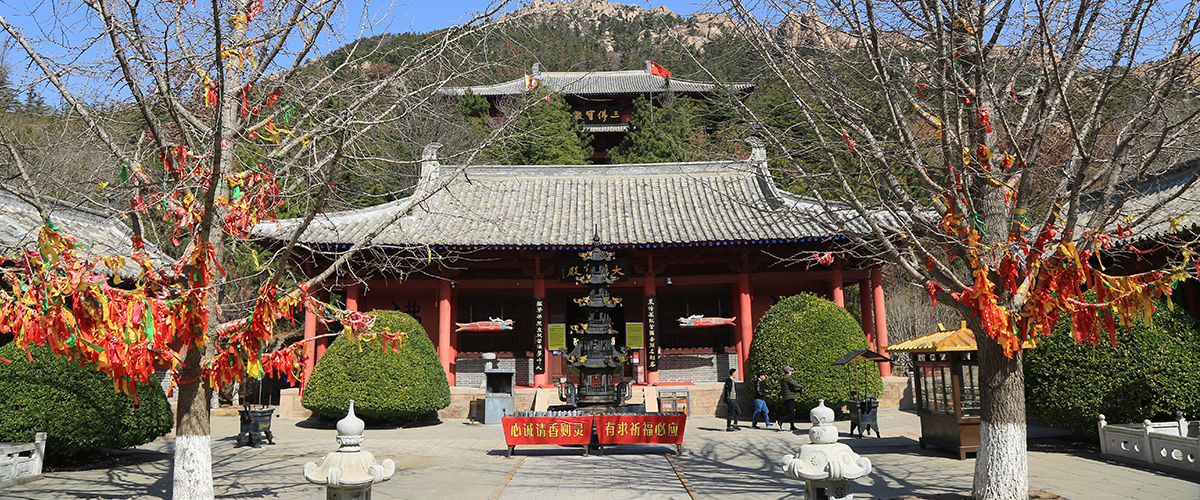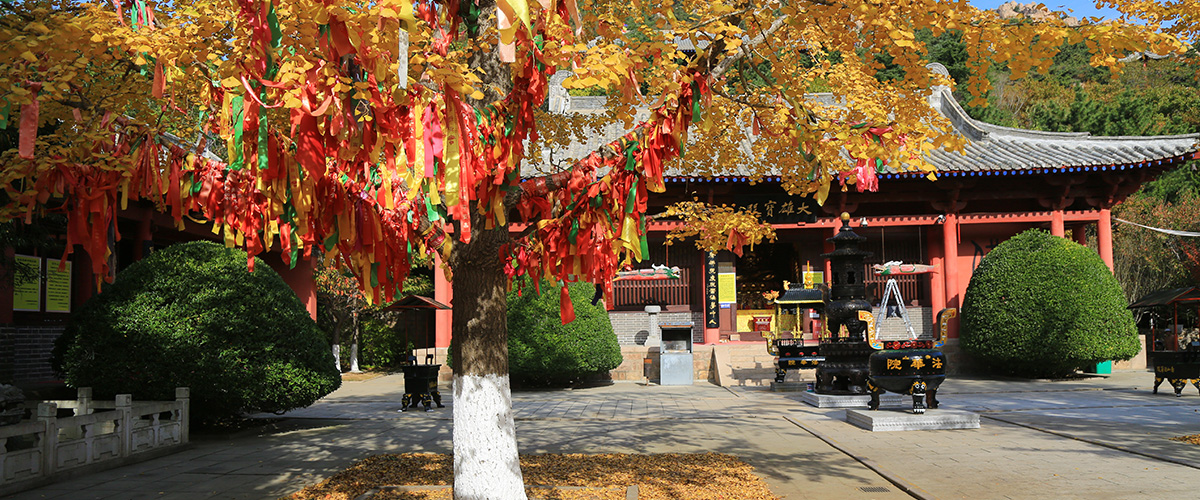Fahua temple was firstly built in 824 AC by Jang Bogo from Silla (present Korea). Dating back to 1200 years ago, it was one the biggest Buddhist temples in Jiaodong Peninsula back to Tang dynasty. The temple was named after Saddharma Pundarika Sutra(Fahua Jing) chanted by the its first group of residents: monks from Tandai sects. In 838 AC, Master Ennin visited Tang Empire from Japan seeking Dharma and lived in Fahua Temple for nearly 3 years. After returning to Japan, he wrote Nitto Guho Junrei Gyoki (or ‘Ru Tang Qiufa Xunli Xingji’ in Mandarin, Record of Pilgrimage to China in Search of the Holy Law), known as the Three Greatest Travel novels of the East together with Marco Polo’s Travels and Da Tang Xiyu Ji (the Great Tang Records on the Western Regions). In this book he recorded Chishan Fahua Temple in details and therefore making it well known to other countries. The temple was then burnt down during the Great Anti-Buddhist Persecution initiated by Emperor Wuzong of Tang. In 1987, the ruins were found according to Nitto Guho Junrei Gyoki. In 1988, the temple was rebuilt and officially opened for visiting in 1st May 1989, and the building complex is composed of the Great Main Hall, Dizang Hall, Guanyin Hall and Three Buddha Hall, etc.
In Nitto Guho Junrei Gyoki Ennin has recorded the location of Fahua Temple as ‘rocky ridge to its south, flowing water in its yard, seeing river flowing from west to east The peaks in the southwest and north are connected as walls, and the sea can be seen far to the east.’ After entering the temple, you will find a Bell Tower and a Drum Tower standing respectively on your left and right sides. In ancient times, Bell Towers and Drum Towers were mainly used for timekeeping. While nowadays, people seeking peace and luck can always get onto the towers to beat the drum or strike the bell.

Ruins of Fahua Temple
To the south of Dizang Hall is the monument to the ruins of Fahua Temple, build in 1988. Visitors from Japan showed up during the opening ceremony, including representatives of the Japanese research association for this temple, and Senei Kakujo, the abbot of Japan Sekizan Zenin (Japanese term for Chishan Buddhist Temple). Master Senei Kakujo chanted for long in front of the monument, remembering Master Ennin and thanking the monks of the Fahua Temple for their help to Master Ennin. The front of the monument reads "Ruins of Chishan Fahua Temple" in Chinese, and on the back side is recorded Master Ennin's pursuit of Dharma in China in Chinese and Japanese.

Chang Baogao Monument
To the south of Dizang Hall is the monument to Chang Baogao (aka Jang Bogo, Chang Pogo), built in 2005 by Chishan Scenic Spot together with Chang's Ancestral Hall from South Korea, in memorial of his construction of Chishan Fahua Temple and his help to Master Ennin at that time. On top of the monument is carved with a pearl played with by two Chinese dragons, which are the leaders of all the fantastic beasts in China; while the base of the monument is a turtle, a mascot for Japan. The design highlights the distinguishing feature of this temple: friendship among China, Korean and Japan.
